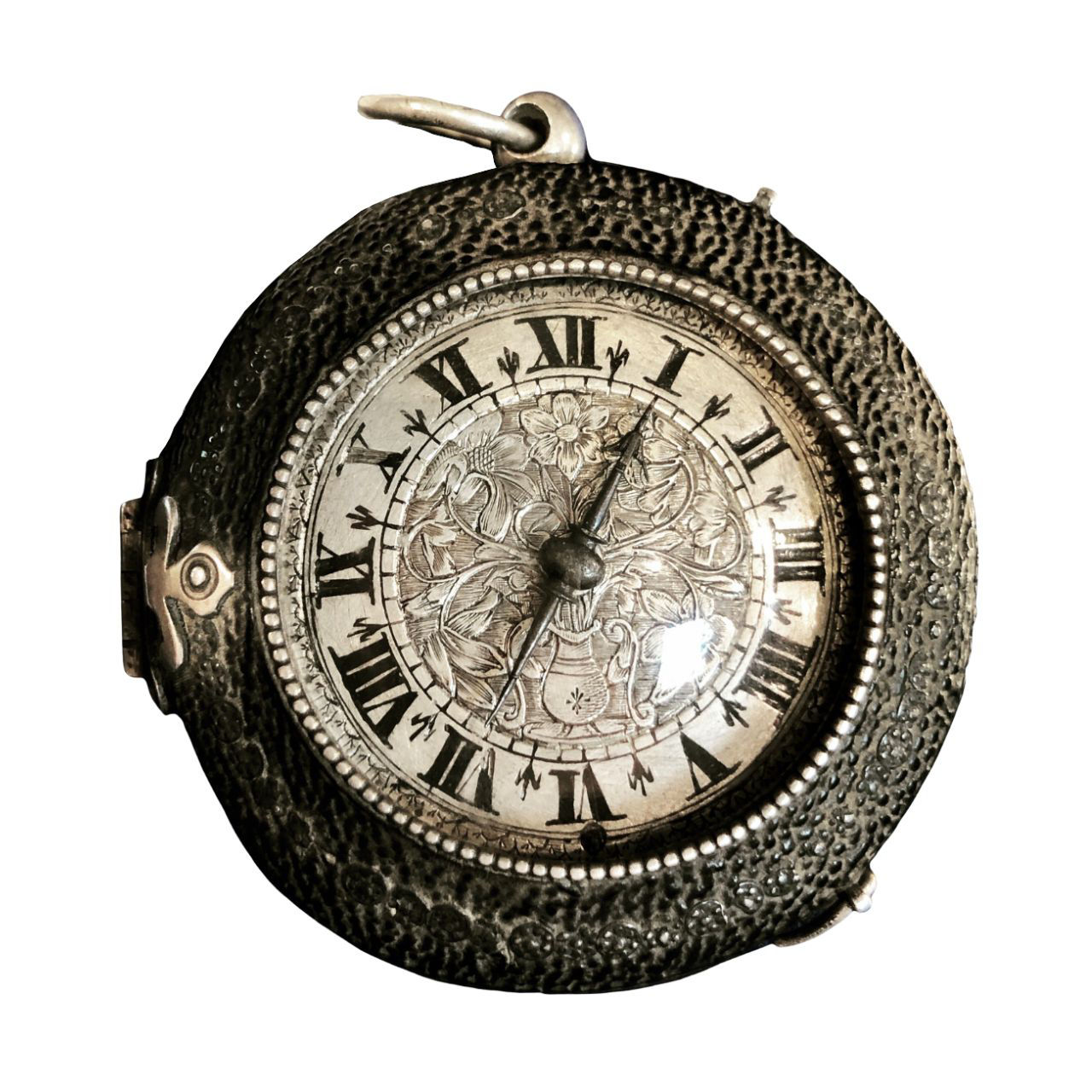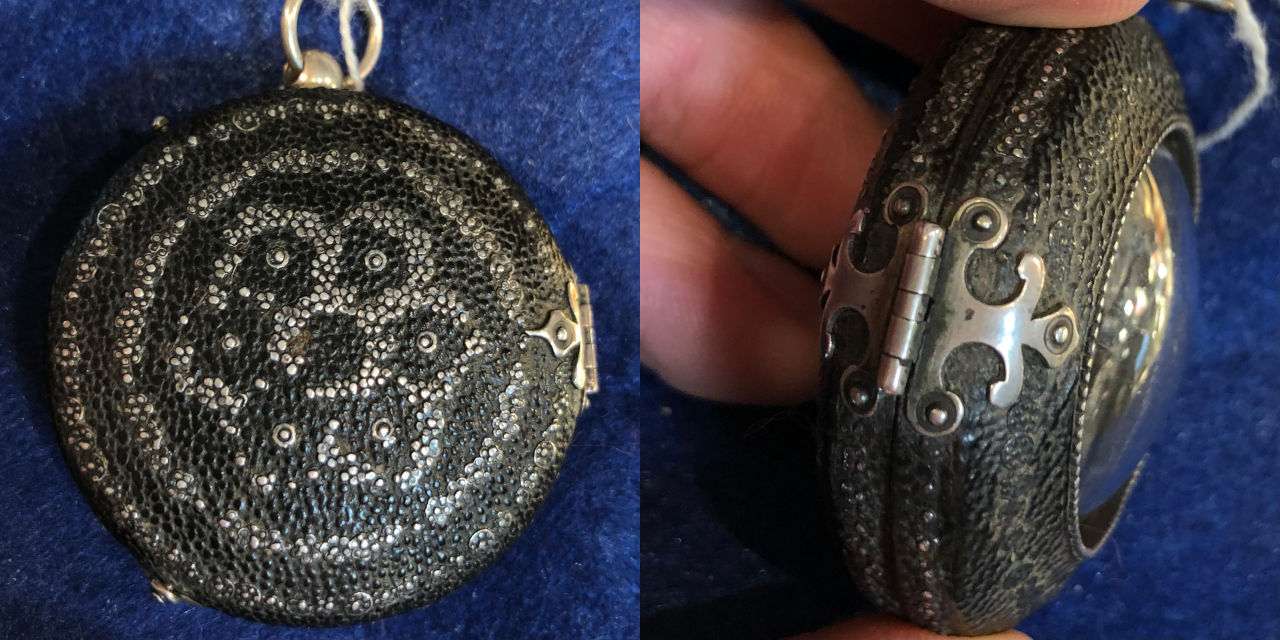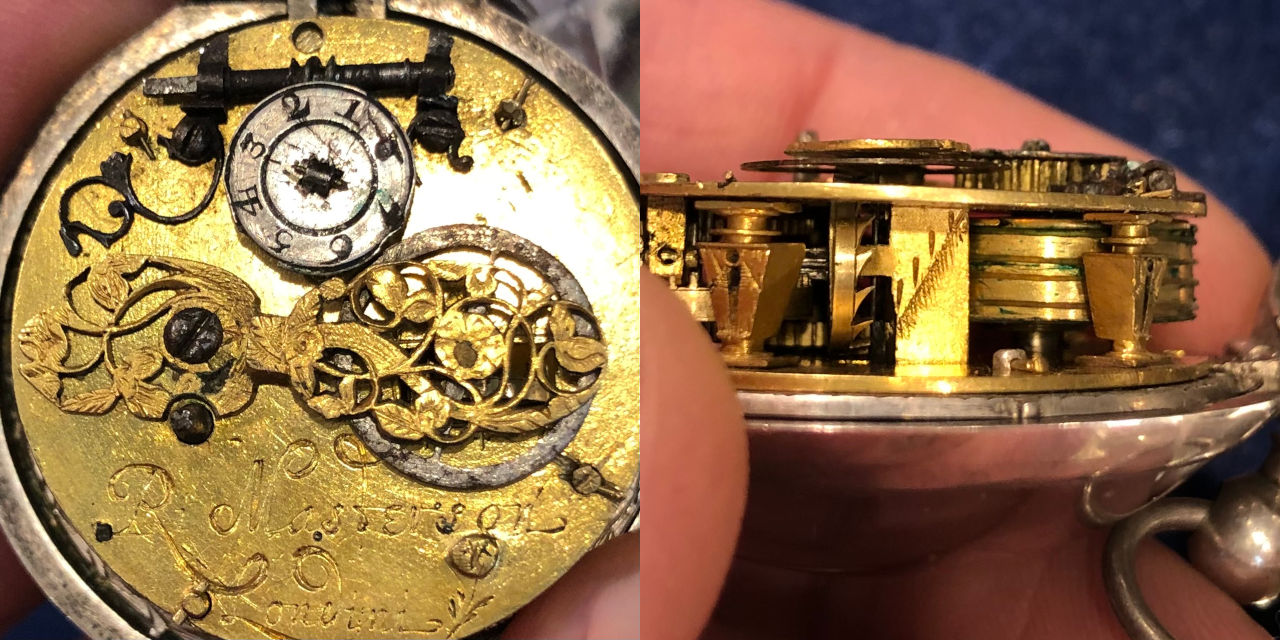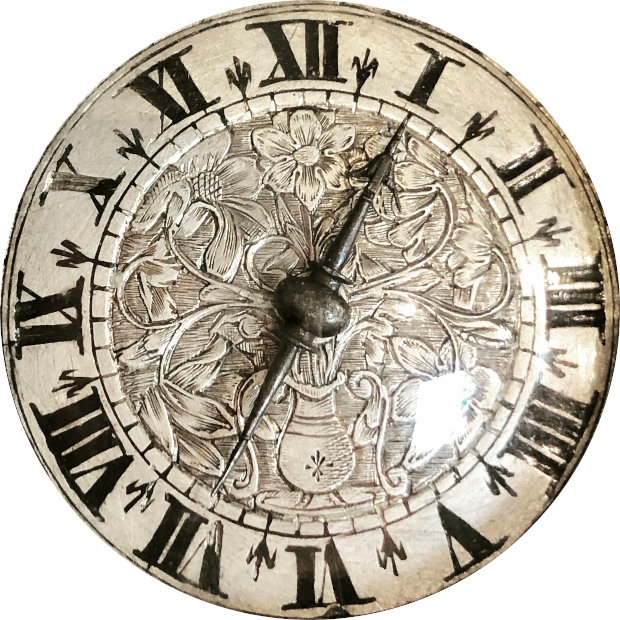In January 2020 this wonderfully original watch by Richard Masterson appeared at an auction of items from Spetchley Park in Worcestershire, seat of the Berkeley family for more than 400 years. I travelled to Chorley’s auction house to view the watch in person.

Richard Masterson, London, circa 1645
In the photograph above you can see that the watch has a silver dial with Roman numeral chapter ring. A single blued steel baluster-form hand indicates the time on a ring calibrated for hours and quarters. By the 1640s dials were most commonly marked for quarter hours, prior to this period only half hours tended to be shown. To the dial centre a vase of flowers is decoratively engraved, the flowers themselves have a naturalistic three-dimensionality and as they stretch around the dial, they pleasingly curl around the inner edge of the chapter ring.

Leather covered outer protective case with silver piqué work and decorative hinge
With a plain silver inner case, the leather covered outer protective case has decoratively applied silver pins – known as piqué work. There is a particularly beautiful, decorative silver hinge. Although a few silver pins are now lacking to the back, it is rare to see original protective outer cases in such fine condition.

Masterson’s backplate and movement side view
The movement is typical of the period with a verge escapement, gut line fusee, and a worm-and-wheel set-up for the mainspring. The hole at the top edge of the movement would have secured a pointer which originally indicated to the scale on the silver wheel of the worm-and-wheel, a part of the decorative bracket to the right of this wheel is also lacking but other than these small losses, the movement is in lovely original condition. Pierced Egyptian pillars hold the movement plates together and the backplate is signed R. Masterson, London. A plain two-arm flat balance is covered by a screwed-on irregular balance cock and foot, the latter decoratively pierced and engraved with flowers and foliage.
Richard Masterson, was a Free Brother in the Clockmakers’ Company from 1633 becoming Warden in 1637 and Master in 1642. He is believed to have died in December 1653 (for dates see Brian Loomes, The Early Clockmakers of Great Britain, 1981, p. 382).
